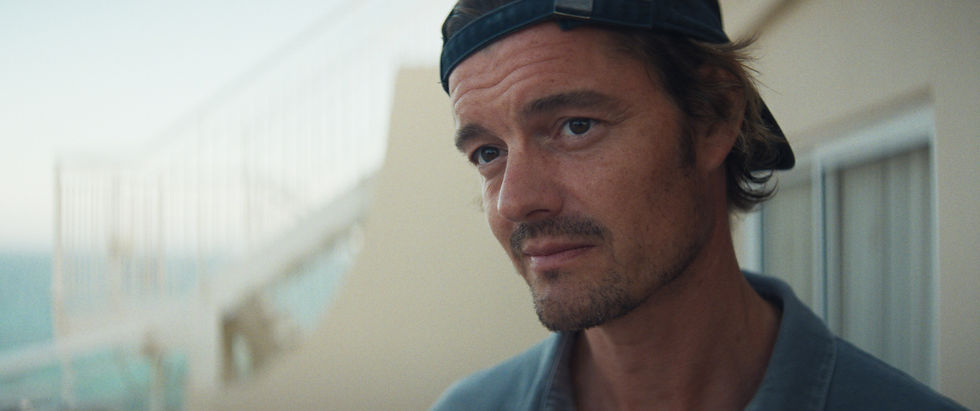AMMONITE
- Kathleen Bondar

- Mar 25, 2021
- 3 min read
Updated: Aug 20, 2021
DIRECTOR: FRANCIS LEE
CAST: KATE WINSLET; SAOIRSE ROMAN; GEMMA JONES; JAMES MCARDLE
UK RELEASE MARCH 2020; 120 MINS
ON AMAZON PRIME FROM 26 MARCH 2021
https://youtu.be/AnDhlrs3XVM

REVIEW by KATHLEEN BONDAR
Kate Winslet’s unwavering, dour countenance as the Victorian palaeontologist Mary Anning in Ammonite belies a passion for something besides fossils. Fossils are certainly her choice of objects, and ammonite one of her discoveries. In Francis Lee’s appropriation of Mary Anning’s love life, we find Anning digging, scraping and polishing her finds which attract fellow enthusiasts nationwide to her humble shop in Lyme Regis. But her object choice turns out to be Charlotte Murchison (Saoirse Roman) the dejected and rejected wife of a fellow palaeontologist (James McArdle) who arrives and swiftly leaves, abandoning his “melancholy” missus to Miss Anning’s care (for a small fee) despite the initial bemusement of both women.
Winslet and Roman are well matched and perfectly cast in a film which draws on exterior and interior settings to complement moods. Home interiors in Ammonite are sublime, dominated by beautiful simplicity reminiscent of a Fired Earth catalogue with Farrow & Ball tints. The colours are muted - sage, grey and whitewash. Life for Anning and her bewildered, elderly mother (Gemma Jones) is respectable but meagre and signified by a simply furnished cottage consisting of an oak table draped in modest lace for best, an upright piano (out of tune) and quarry tiled floors. Ornaments are sparse, a clock on the mantel piece and small china dogs, “babies” representing the mother’s deceased children.
Lee also gives the sea a role – it is Lyme Regis and the Jurassic coast of Dorset after all – and he makes the most of the arching, harbour wall reminiscent of The French Lieutenant’s Woman final scene. The Dorset coast is rough, pounding, and unforgiving rather like Miss Anning. Charlotte is bashed by the waves, compounded by her clumsy Victorian swimsuit, when she attempts to “bathe”. Collapsing in a fever turns out to be the best of moves (queue, Mary nursing her better).
All this direction is commendable, but it is the affair between the two women that steals the film with a sexual passion translated to screen so startling that it must win either Winslet and/or Roman an award, if not Lee and his crew (Cinematography: Stephane Fontaine). At first the women clash. Anning is stern, silently aggressive and distinctly unfriendly. She urinates on the beach, lifting her heavy long skirts. She hammers and cracks rocks and expects Charlotte to do the same. “I came for my illness. To bathe and take fresh air. Not work like a navy,” says Charlotte. “I’m paid to let you be here - couldn’t care less,” is Mary’s retort. Mary’s plain words are few and far between (yet those dark, grey eyes convey so much) whilst Charlotte is fluent and eloquent. Mary is plain, functional in appearance, wearing practical cotton dresses. Charlotte is delicate, more refined, dressed in couture silk, her blonde hair curled. She doesn’t know how to peel a carrot or collect coal. However, there the polarisation ends. Charlotte is not pathetic, and Saoirse Roman is able to infuse her character with an energy to match Winslet’s when they eventually ignite.
@AmmoniteMovie
To find out about Mary Anning’s geological career head to https://www.bbc.co.uk/news/uk-england-dorset-54510746 by Roz Tappenden, who has (pun forgiving) unearthed a great deal of fascinating facts.
To find out more about Francis Lee’s appropriation of Mary Anning’s sexuality go to Roisin O’Connor’s article in the Independent 19/03/2019


